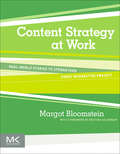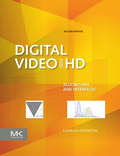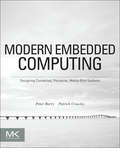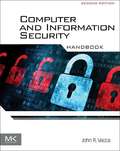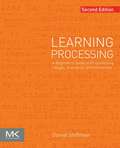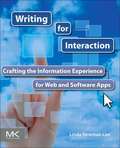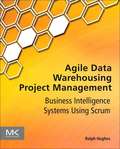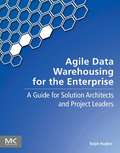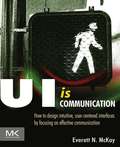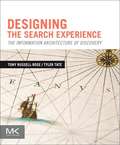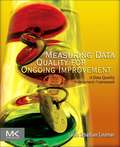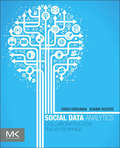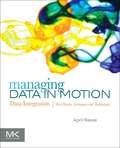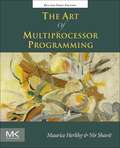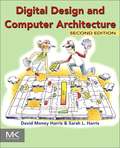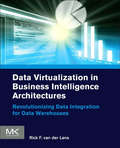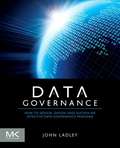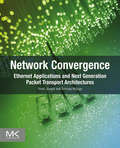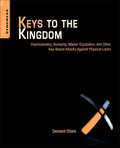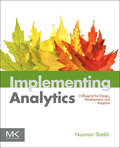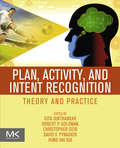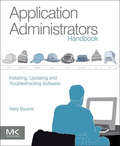- Table View
- List View
Cyber Attacks: Protecting National Infrastructure, STUDENT EDITION
by Edward AmorosoCyber Attacks, Student Edition, offers a technical, architectural, and management approach to solving the problems of protecting national infrastructure. This approach includes controversial themes such as the deliberate use of deception to trap intruders. This volume thus serves as an attractive framework for a new national strategy for cyber security. A specific set of criteria requirements allows any organization, such as a government agency, to integrate the principles into their local environment. In this edition, each principle is presented as a separate security strategy and illustrated with compelling examples. The book adds 50-75 pages of new material aimed specifically at enhancing the student experience and making it more attractive for instructors teaching courses such as cyber security, information security, digital security, national security, intelligence studies, technology and infrastructure protection. It now also features case studies illustrating actual implementation scenarios of the principles and requirements discussed in the text, along with a host of new pedagogical elements, including chapter outlines, chapter summaries, learning checklists, and a 2-color interior. Furthermore, a new and complete ancillary package includes test bank, lesson plans, PowerPoint slides, case study questions, and more. This text is intended for security practitioners and military personnel as well as for students wishing to become security engineers, network operators, software designers, technology managers, application developers, etc. Provides case studies focusing on cyber security challenges and solutions to display how theory, research, and methods, apply to real-life challengesUtilizes, end-of-chapter case problems that take chapter content and relate it to real security situations and issuesIncludes instructor slides for each chapter as well as an instructor’s manual with sample syllabi and test bank
Content Strategy at Work: Real-world Stories to Strengthen Every Interactive Project
by Margot BloomsteinContent is king… and the new kingmaker… and your message needs to align with your model and metrics and other mumbo jumbo, right? Whether you’re slogging through theory or buzzwords, there’s no denying content strategy is coming of age. But what’s in it for you? And if you’re not a content strategist, why should you care? Because even if content strategy isn’t your job, content’s probably your problem—and probably more than you think. You or your business has a message you want to deliver, right? You can deliver that message through various channels and content types, from Tweets to testimonials and photo galleries galore, and your audience has just as many ways of engaging with it. So many ways, so much content… so where’s the problem? That is the problem. And you can measure it in time, creativity, money, lost opportunity, and the sobs you hear equally from creative directors, project managers, and search engine marketing specialists. The solution is content strategy, and this book offers real-world examples and approaches you can adopt, no matter your role on the team. Put content strategy to work for you by gathering this book into your little hands and gobbling up never-before seen case studies from teams at Johns Hopkins Medicine, MINI, Icebreaker, and more. Content Strategy at Work is a book for designers, information architects, copywriters, project managers, and anyone who works with visual or verbal content. It discusses how you can communicate and forge a plan that will enable you, your company, or your client get that message across and foster better user experiences. Presents a content strategy framework and ways to implement in both in-house marketing departments and consultanciesIncludes case studies, interviews, and lessons learned from retail, apparel, network television, business-to-business, automotive, non-profit, and higher ed brandsDetails practical sales techniques to sell content strategy and use content strategy processes to sell other services and larger projects
Digital Video and HD: Algorithms and Interfaces (The Morgan Kaufmann Series in Computer Graphics)
by Charles PoyntonDigital Video and HD: Algorithms and Interfaces provides a one-stop shop for the theory and engineering of digital video systems. Equally accessible to video engineers and those working in computer graphics, Charles Poynton’s revision to his classic text covers emergent compression systems, including H.264 and VP8/WebM, and augments detailed information on JPEG, DVC, and MPEG-2 systems. This edition also introduces the technical aspects of file-based workflows and outlines the emerging domain of metadata, placing it in the context of digital video processing. Basic concepts of digitization, sampling, quantization, gamma, and filteringPrinciples of color science as applied to image capture and displayScanning and coding of SDTV and HDTVVideo color coding: luma, chroma (4:2:2 component video, 4fSC composite video)Analog NTSC and PALStudio systems and interfacesCompression technology, including M-JPEG and MPEG-2Broadcast standards and consumer video equipment
Modern Embedded Computing: Designing Connected, Pervasive, Media-Rich Systems
by Peter Barry Patrick CrowleyModern Embedded Computing: Designing Connected, Pervasive, Media-Rich Systems provides a thorough understanding of the platform architecture of modern embedded computing systems that drive mobile devices. The book offers a comprehensive view of developing a framework for embedded systems-on-chips. Examples feature the Intel Atom processor, which is used in high-end mobile devices such as e-readers, Internet-enabled TVs, tablets, and net books. This is a unique book in terms of its approach – moving towards consumer. It teaches readers how to design embedded processors for systems that support gaming, in-vehicle infotainment, medical records retrieval, point-of-sale purchasing, networking, digital storage, and many more retail, consumer and industrial applications. Beginning with a discussion of embedded platform architecture and Intel Atom-specific architecture, modular chapters cover system boot-up, operating systems, power optimization, graphics and multi-media, connectivity, and platform tuning. Companion lab materials complement the chapters, offering hands-on embedded design experience. This text will appeal not only to professional embedded system designers but also to students in computer architecture, electrical engineering, and embedded system design. Learn embedded systems design with the Intel Atom Processor, based on the dominant PC chip architecture. Examples use Atom and offer comparisons to other platformsDesign embedded processors for systems that support gaming, in-vehicle infotainment, medical records retrieval, point-of-sale purchasing, networking, digital storage, and many more retail, consumer and industrial applicationsExplore companion lab materials online that offer hands-on embedded design experience
Computer and Information Security Handbook
by John R. VaccaThe second edition of this comprehensive handbook of computer and information security provides the most complete view of computer security and privacy available. It offers in-depth coverage of security theory, technology, and practice as they relate to established technologies as well as recent advances. It explores practical solutions to many security issues. Individual chapters are authored by leading experts in the field and address the immediate and long-term challenges in the authors’ respective areas of expertise. The book is organized into 10 parts comprised of 70 contributed chapters by leading experts in the areas of networking and systems security, information management, cyber warfare and security, encryption technology, privacy, data storage, physical security, and a host of advanced security topics. New to this edition are chapters on intrusion detection, securing the cloud, securing web apps, ethical hacking, cyber forensics, physical security, disaster recovery, cyber attack deterrence, and more.Chapters by leaders in the field on theory and practice of computer and information security technology, allowing the reader to develop a new level of technical expertiseComprehensive and up-to-date coverage of security issues allows the reader to remain current and fully informed from multiple viewpointsPresents methods of analysis and problem-solving techniques, enhancing the reader's grasp of the material and ability to implement practical solutions
Learning Processing: A Beginner's Guide to Programming Images, Animation, and Interaction (The Morgan Kaufmann Series in Computer Graphics)
by Daniel ShiffmanLearning Processing, Second Edition, is a friendly start-up guide to Processing, a free, open-source alternative to expensive software and daunting programming languages. Requiring no previous experience, this book is for the true programming beginner. It teaches the basic building blocks of programming needed to create cutting-edge graphics applications including interactive art, live video processing, and data visualization. Step-by-step examples, thorough explanations, hands-on exercises, and sample code, supports your learning curve. A unique lab-style manual, the book gives graphic and web designers, artists, and illustrators of all stripes a jumpstart on working with the Processing programming environment by providing instruction on the basic principles of the language, followed by careful explanations of select advanced techniques. The book has been developed with a supportive learning experience at its core. From algorithms and data mining to rendering and debugging, it teaches object-oriented programming from the ground up within the fascinating context of interactive visual media. This book is ideal for graphic designers and visual artists without programming background who want to learn programming. It will also appeal to students taking college and graduate courses in interactive media or visual computing, and for self-study.A friendly start-up guide to Processing, a free, open-source alternative to expensive software and daunting programming languages No previous experience required—this book is for the true programming beginner!Step-by-step examples, thorough explanations, hands-on exercises, and sample code supports your learning curve
Writing for Interaction: Crafting the Information Experience for Web and Software Apps
by Linda Newman LiorWriting for Interaction focuses on the art of creating the information experience as it appears within software and web applications, specifically in the form of user interface text. It also provides strategies for ensuring a consistent, positive information experience across a variety of delivery mechanisms, such as online help and social media. Throughout this book, you'll learn simple techniques for writing consistent text with the right tone, how to select content delivery mechanisms, and how straightforward, clear layouts help your customer interact with your application. Divided into five sections, the book completely covers the information experience design process from beginning to end. You'll cover everything from understanding your users and their needs, to creating personas, designing the IX strategy, creating your information, and evaluating the resulting information experience. This is your one-stop reference for information experience!Illuminates writing principles and practices for use in interactive design Includes examples, checklists, and sample processes, highlighting practical approaches to designing the information experience Provides the complete picture: understanding customer needs, creating personas, and writing the text appearing within the user interface
Agile Data Warehousing Project Management: Business Intelligence Systems Using Scrum
by Ralph HughesYou have to make sense of enormous amounts of data, and while the notion of “agile data warehousing" might sound tricky, it can yield as much as a 3-to-1 speed advantage while cutting project costs in half. Bring this highly effective technique to your organization with the wisdom of agile data warehousing expert Ralph Hughes. Agile Data Warehousing Project Management will give you a thorough introduction to the method as you would practice it in the project room to build a serious “data mart." Regardless of where you are today, this step-by-step implementation guide will prepare you to join or even lead a team in visualizing, building, and validating a single component to an enterprise data warehouse.Provides a thorough grounding on the mechanics of Scrum as well as practical advice on keeping your team on trackIncludes strategies for getting accurate and actionable requirements from a team’s business partnerRevolutionary estimating techniques that make forecasting labor far more understandable and accurateDemonstrates a blends of Agile methods to simplify team management and synchronize inputs across IT specialtiesEnables you and your teams to start simple and progress steadily to world-class performance levels
Agile Data Warehousing for the Enterprise: A Guide for Solution Architects and Project Leaders
by Ralph HughesBuilding upon his earlier book that detailed agile data warehousing programming techniques for the Scrum master, Ralph's latest work illustrates the agile interpretations of the remaining software engineering disciplines: Requirements management benefits from streamlined templates that not only define projects quickly, but ensure nothing essential is overlooked.Data engineering receives two new "hyper modeling" techniques, yielding data warehouses that can be easily adapted when requirements change without having to invest in ruinously expensive data-conversion programs. Quality assurance advances with not only a stereoscopic top-down and bottom-up planning method, but also the incorporation of the latest in automated test engines. Use this step-by-step guide to deepen your own application development skills through self-study, show your teammates the world's fastest and most reliable techniques for creating business intelligence systems, or ensure that the IT department working for you is building your next decision support system the right way.Learn how to quickly define scope and architecture before programming starts Includes techniques of process and data engineering that enable iterative and incremental delivery Demonstrates how to plan and execute quality assurance plans and includes a guide to continuous integration and automated regression testing Presents program management strategies for coordinating multiple agile data mart projects so that over time an enterprise data warehouse emerges Use the provided 120-day road map to establish a robust, agile data warehousing program
UI is Communication: How to Design Intuitive, User Centered Interfaces by Focusing on Effective Communication
by Everett N McKayUser interface design is a challenging, multi-disciplinary activity that requires understanding a wide range of concepts and techniques that are often subjective and even conflicting. Imagine how much it would help if there were a single perspective that you could use to simplify these complex issues down to a small set of objective principles. In UI is Communication, Everett McKay explains how to design intuitive user interfaces by focusing on effective human communication. A user interface is ultimately a conversation between users and technology. Well-designed user interfaces use the language of UI to communicate to users efficiently and naturally. They also recognize that there is an emotional human being at the other end of the interaction, so good user interfaces strive to make an emotional connection. Applying what you learn from UI is Communication will remove much of the mystic, subjectiveness, and complexity from user interface design, and help you make better design decisions with confidence. It’s the perfect introduction to user interface design.Approachable, practical communication-based guide to interaction and visual design that you can immediately apply to projects to make solid design decisions quickly and confidentlyIncludes design makeovers so you can see the concepts in practice with real examplesCommunication-based design process ties everything from interaction to visual design together
Designing the Search Experience: The Information Architecture of Discovery
by Tony Russell-Rose Tyler TateSearch is not just a box and ten blue links. Search is a journey: an exploration where what we encounter along the way changes what we seek. But in order to guide people along this journey, designers must understand both the art and science of search.In Designing the Search Experience, authors Tony Russell-Rose and Tyler Tate weave together the theories of information seeking with the practice of user interface design. Understand how people search, and how the concepts of information seeking, information foraging, and sensemaking underpin the search processApply the principles of user-centered design to the search box, search results, faceted navigation, mobile interfaces, social search, and much moreDesign the cross-channel search experiences of tomorrow that span desktop, tablet, mobile, and other devices
Temporal QOS Management in Scientific Cloud Workflow Systems
by Xiao Liu Yun Yang Jinjun ChenCloud computing can provide virtually unlimited scalable high performance computing resources. Cloud workflows often underlie many large scale data/computation intensive e-science applications such as earthquake modelling, weather forecasting and astrophysics. During application modelling, these sophisticated processes are redesigned as cloud workflows, and at runtime, the models are executed by employing the supercomputing and data sharing ability of the underlying cloud computing infrastructures. Temporal QOS Management in Scientific Cloud Workflow Systems focuses on real world scientific applications which often must be completed by satisfying a set of temporal constraints such as milestones and deadlines. Meanwhile, activity duration, as a measurement of system performance, often needs to be monitored and controlled. This book demonstrates how to guarantee on-time completion of most, if not all, workflow applications. Offering a comprehensive framework to support the lifecycle of time-constrained workflow applications, this book will enhance the overall performance and usability of scientific cloud workflow systems.Explains how to reduce the cost to detect and handle temporal violations while delivering high quality of service (QoS) Offers new concepts, innovative strategies and algorithms to support large-scale sophisticated applications in the cloud Improves the overall performance and usability of cloud workflow systems
Measuring Data Quality for Ongoing Improvement: A Data Quality Assessment Framework (The Morgan Kaufmann Series on Business Intelligence)
by Laura Sebastian-ColemanThe Data Quality Assessment Framework shows you how to measure and monitor data quality, ensuring quality over time. You’ll start with general concepts of measurement and work your way through a detailed framework of more than three dozen measurement types related to five objective dimensions of quality: completeness, timeliness, consistency, validity, and integrity. Ongoing measurement, rather than one time activities will help your organization reach a new level of data quality. This plain-language approach to measuring data can be understood by both business and IT and provides practical guidance on how to apply the DQAF within any organization enabling you to prioritize measurements and effectively report on results. Strategies for using data measurement to govern and improve the quality of data and guidelines for applying the framework within a data asset are included. You’ll come away able to prioritize which measurement types to implement, knowing where to place them in a data flow and how frequently to measure. Common conceptual models for defining and storing of data quality results for purposes of trend analysis are also included as well as generic business requirements for ongoing measuring and monitoring including calculations and comparisons that make the measurements meaningful and help understand trends and detect anomalies. Demonstrates how to leverage a technology independent data quality measurement framework for your specific business priorities and data quality challengesEnables discussions between business and IT with a non-technical vocabulary for data quality measurementDescribes how to measure data quality on an ongoing basis with generic measurement types that can be applied to any situation
Social Data Analytics: Collaboration for the Enterprise (The Morgan Kaufmann Series on Business Intelligence)
by Krish Krishnan Shawn P. RogersSocial Data Analytics is the first practical guide for professionals who want to employ social data for analytics and business intelligence (BI). This book provides a comprehensive overview of the technologies and platforms and shows you how to access and analyze the data. You'll explore the five major types of social data and learn from cases and platform examples to help you make the most of sentiment, behavioral, social graph, location, and rich media data. A four-step approach to the social BI process will help you access, evaluate, collaborate, and share social data with ease. You'll learn everything you need to know to monitor social media and get an overview of the leading vendors in a crowded space of BI applications. By the end of this book, you will be well prepared for your organization’s next social data analytics project.Provides foundational understanding of new and emerging technologies—social data, collaboration, big data, advanced analyticsIncludes case studies and practical examples of success and failuresWill prepare you to lead projects and advance initiatives that will benefit you and your organization
Managing Data in Motion: Data Integration Best Practice Techniques and Technologies (The Morgan Kaufmann Series on Business Intelligence)
by April ReeveManaging Data in Motion describes techniques that have been developed for significantly reducing the complexity of managing system interfaces and enabling scalable architectures. Author April Reeve brings over two decades of experience to present a vendor-neutral approach to moving data between computing environments and systems. Readers will learn the techniques, technologies, and best practices for managing the passage of data between computer systems and integrating disparate data together in an enterprise environment. The average enterprise's computing environment is comprised of hundreds to thousands computer systems that have been built, purchased, and acquired over time. The data from these various systems needs to be integrated for reporting and analysis, shared for business transaction processing, and converted from one format to another when old systems are replaced and new systems are acquired. The management of the "data in motion" in organizations is rapidly becoming one of the biggest concerns for business and IT management. Data warehousing and conversion, real-time data integration, and cloud and "big data" applications are just a few of the challenges facing organizations and businesses today. Managing Data in Motion tackles these and other topics in a style easily understood by business and IT managers as well as programmers and architects.Presents a vendor-neutral overview of the different technologies and techniques for moving data between computer systems including the emerging solutions for unstructured as well as structured data typesExplains, in non-technical terms, the architecture and components required to perform data integration Describes how to reduce the complexity of managing system interfaces and enable a scalable data architecture that can handle the dimensions of "Big Data"
The Art of Multiprocessor Programming, Revised Reprint
by Maurice Herlihy Nir ShavitRevised and updated with improvements conceived in parallel programming courses, The Art of Multiprocessor Programming is an authoritative guide to multicore programming. It introduces a higher level set of software development skills than that needed for efficient single-core programming. This book provides comprehensive coverage of the new principles, algorithms, and tools necessary for effective multiprocessor programming. Students and professionals alike will benefit from thorough coverage of key multiprocessor programming issues. This revised edition incorporates much-demanded updates throughout the book, based on feedback and corrections reported from classrooms since 2008 Learn the fundamentals of programming multiple threads accessing shared memory Explore mainstream concurrent data structures and the key elements of their design, as well as synchronization techniques from simple locks to transactional memory systems Visit the companion site and download source code, example Java programs, and materials to support and enhance the learning experience
Digital Design and Computer Architecture
by David Harris Sarah L. HarrisDigital Design and Computer Architecture, Second Edition, takes a unique and modern approach to digital design, introducing the reader to the fundamentals of digital logic and then showing step by step how to build a MIPS microprocessor in both Verilog and VHDL. This new edition combines an engaging and humorous writing style with an updated and hands-on approach to digital design. It presents new content on I/O systems in the context of general purpose processors found in a PC as well as microcontrollers found almost everywhere. Beginning with digital logic gates and progressing to the design of combinational and sequential circuits, the book uses these fundamental building blocks as the basis for the design of an actual MIPS processor. It provides practical examples of how to interface with peripherals using RS232, SPI, motor control, interrupts, wireless, and analog-to-digital conversion. SystemVerilog and VHDL are integrated throughout the text in examples illustrating the methods and techniques for CAD-based circuit design. There are also additional exercises and new examples of parallel and advanced architectures, practical I/O applications, embedded systems, and heterogeneous computing, plus a new appendix on C programming to strengthen the connection between programming and processor architecture. This new edition will appeal to professional computer engineers and to students taking a course that combines digital logic and computer architecture.Updated based on instructor feedback with more exercises and new examples of parallel and advanced architectures, practical I/O applications, embedded systems, and heterogeneous computingPresents digital system design examples in both VHDL and SystemVerilog (updated for the second edition from Verilog), shown side-by-side to compare and contrast their strengthsIncludes a new chapter on C programming to provide necessary prerequisites and strengthen the connection between programming and processor architectureCompanion Web site includes links to Xilinx CAD tools for FPGA design, lecture slides, laboratory projects, and solutions to exercisesInstructors can also register at textbooks.elsevier.com for access to: Solutions to all exercises (PDF), Lab materials with solutions, HDL for textbook examples and exercise solutions, Lecture slides (PPT), Sample exams, Sample course syllabus, Figures from the text (JPG, PPT)
Data Virtualization for Business Intelligence Systems: Revolutionizing Data Integration for Data Warehouses
by Rick van der LansData virtualization can help you accomplish your goals with more flexibility and agility. Learn what it is and how and why it should be used with Data Virtualization for Business Intelligence Systems. In this book, expert author Rick van der Lans explains how data virtualization servers work, what techniques to use to optimize access to various data sources and how these products can be applied in different projects. You’ll learn the difference is between this new form of data integration and older forms, such as ETL and replication, and gain a clear understanding of how data virtualization really works. Data Virtualization for Business Intelligence Systems outlines the advantages and disadvantages of data virtualization and illustrates how data virtualization should be applied in data warehouse environments. You’ll come away with a comprehensive understanding of how data virtualization will make data warehouse environments more flexible and how it make developing operational BI applications easier. Van der Lans also describes the relationship between data virtualization and related topics, such as master data management, governance, and information management, so you come away with a big-picture understanding as well as all the practical know-how you need to virtualize your data. First independent book on data virtualization that explains in a product-independent way how data virtualization technology works. Illustrates concepts using examples developed with commercially available products. Shows you how to solve common data integration challenges such as data quality, system interference, and overall performance by following practical guidelines on using data virtualization. Apply data virtualization right away with three chapters full of practical implementation guidance. Understand the big picture of data virtualization and its relationship with data governance and information management.
Data Governance: How to Design, Deploy and Sustain an Effective Data Governance Program (The Morgan Kaufmann Series on Business Intelligence)
by John LadleyThis book is for any manager or team leader that has the green light to implement a data governance program. The problem of managing data continues to grow with issues surrounding cost of storage, exponential growth, as well as administrative, management and security concerns – the solution to being able to scale all of these issues up is data governance which provides better services to users and saves money. What you will find in this book is an overview of why data governance is needed, how to design, initiate, and execute a program and how to keep the program sustainable. With the provided framework and case studies you will be enabled and educated in launching your very own successful and money saving data governance program.Provides a complete overview of the data governance lifecycle, that can help you discern technology and staff needs Specifically aimed at managers who need to implement a data governance program at their companyIncludes case studies to detail ‘do’s’ and ‘don’ts’ in real-world situations
Network Convergence: Ethernet Applications and Next Generation Packet Transport Architectures
by Vinod Joseph Srinivas MuluguNetwork Convergence: Ethernet Applications and Next Generation Packet Transport Architectures provides the guidance and solutions you'll need to understand Ethernet and emerging applications such as cloud computing and mobile apps, as well as large-scale retail and business deployments. This reference starts with an overview of the Ethernet and existing broadband architectures, including XDSL, WIMAX, and VLANs. It moves on to cover next-generation networks and mobile architectures, as well as cloud computing. The book also addresses the convergence of optical, Ethernet and IP/MPLS layers, considered to be the backbone of next-generation packet transport architecture. If you're a network designer or architect, a technical sales professional, or if you're pursuing technical certifications, you will benefit from Network Convergence's fundamental information on this rapidly evolving technology.Discusses architectural nuances and includes practical case studies for deploying the next-generation framework for each service type Explains data center and cloud computing interconnect schemes for building next-generation cloud infrastructures that support a new array of requirements Provides configuration schemes from leading vendors, including Cisco, Juniper and Alcatel
Keys to the Kingdom: Impressioning, Privilege Escalation, Bumping, and Other Key-Based Attacks Against Physical Locks
by Deviant OllamLockpicking has become a popular topic with many in the security community. While many have chosen to learn the fine art of opening locks without keys, few people explore the fascinating methods of attack that are possible WITH keys. Keys to the Kingdom addresses the topics of impressioning, master key escalation, skeleton keys, and bumping attacks that go well beyond any treatment of these topics in the author’s previous book, Practical Lock Picking. This material is all new and focuses on locks currently in use as well as ones that have recently emerged on the market. Hackers and pen testers or persons tasked with defending their infrastructure and property from invasion will find these techniques uniquely valuable. As with Deviant Ollam’s previous book, Practical Lock Picking, Keys to the Kingdom includes full-color versions of all diagrams and photographs. Check out the companion website which includes instructional videos that provide readers with a full-on training seminar from the author.Excellent companion to Deviant Ollam’s Practical Lock PickingUnderstand the typical failings of common security hardware in order to avoid these weaknessesLearn advanced methods of physical attack in order to be more successful with penetration testingDetailed full-color photos in the book make learning easy, and companion website is filled with invalualble training videos from Dev!
Implementing Analytics: A Blueprint for Design, Development, and Adoption (The Morgan Kaufmann Series on Business Intelligence)
by Nauman SheikhImplementing Analytics demystifies the concept, technology and application of analytics and breaks its implementation down to repeatable and manageable steps, making it possible for widespread adoption across all functions of an organization. Implementing Analytics simplifies and helps democratize a very specialized discipline to foster business efficiency and innovation without investing in multi-million dollar technology and manpower. A technology agnostic methodology that breaks down complex tasks like model design and tuning and emphasizes business decisions rather than the technology behind analytics.Simplifies the understanding of analytics from a technical and functional perspective and shows a wide array of problems that can be tackled using existing technologyProvides a detailed step by step approach to identify opportunities, extract requirements, design variables and build and test models. It further explains the business decision strategies to use analytics models and provides an overview for governance and tuningHelps formalize analytics projects from staffing, technology and implementation perspectivesEmphasizes machine learning and data mining over statistics and shows how the role of a Data Scientist can be broken down and still deliver the value by building a robust development process
Synchronous Precharge Logic
by Marek SmosznaPrecharge logic is used by a variety of industries in applications where processor speed is the primary goal, such as VLSI (very large systems integration) applications. Also called dynamic logic, this type of design uses a clock to synchronize instructions in circuits. This comprehensive book covers the challenges faced by designers when using this logic style, including logic basics, timing, noise considerations, alternative topologies and more. In addition advanced topics such as skew tolerant design are covered in some detail. Overall this is a comprehensive view of precharge logic, which should be useful to graduate students and designers in the field alike. It might also be considered as a supplemental title for courses covering VLSI.Comprehensive guide to precharge logicExplains both the advantages and disadvantages to help engineers decide when to utilize precharge logicUseful for engineers in a variety of industries
Plan, Activity, and Intent Recognition: Theory and Practice
by Gita Sukthankar, Christopher Geib, Hung Hai Bui, David V. Pynadath and Robert P. GoldmanPlan recognition, activity recognition, and intent recognition together combine and unify techniques from user modeling, machine vision, intelligent user interfaces, human/computer interaction, autonomous and multi-agent systems, natural language understanding, and machine learning. Plan, Activity, and Intent Recognition explains the crucial role of these techniques in a wide variety of applications including: personal agent assistants computer and network security opponent modeling in games and simulation systems coordination in robots and software agents web e-commerce and collaborative filtering dialog modeling video surveillance smart homes In this book, follow the history of this research area and witness exciting new developments in the field made possible by improved sensors, increased computational power, and new application areas.Combines basic theory on algorithms for plan/activity recognition along with results from recent workshops and seminarsExplains how to interpret and recognize plans and activities from sensor dataProvides valuable background knowledge and assembles key concepts into one guide for researchers or students studying these disciplines
Application Administrators Handbook: Installing, Updating and Troubleshooting Software
by Kelly C BourneAn application administrator installs, updates, optimizes, debugs and otherwise maintains computer applications for an organization. In most cases, these applications have been licensed from a third party, but they may have been developed internally. Examples of application types include enterprise resource planning (ERP), customer resource management (CRM), and point of sale (POS), legal contract management, time tracking, accounts payable/receivable, payroll, SOX compliance tracking, budgeting, forecasting and training. In many cases, the organization is absolutely dependent that these applications be kept running. The importance of application administrators and the level to which organizations depend upon them is easily overlooked. Application Administrators Handbook provides an overview of every phase of administering an application, from working with the vendor before installation, the installation process itself, importing data into the application, handling upgrades, working with application users to report problems, scheduling backups, automating tasks that need to be done on a repetitive schedule, and finally retiring an application. It provides detailed, hands-on instructions on how to perform many specific tasks that an application administrator must be able to handle. Learn how to install, administer and maintain key software applications throughout the product life cycleGet detailed, hands-on instructions on steps that should be taken before installing or upgrading an application to ensure continuous operationIdentify repetitive tasks and find out how they can be automated, thereby saving valuable timeUnderstand the latest on government mandates and regulations, such as privacy, SOX, HIPAA, PCI, and FISMA and how to fully comply

